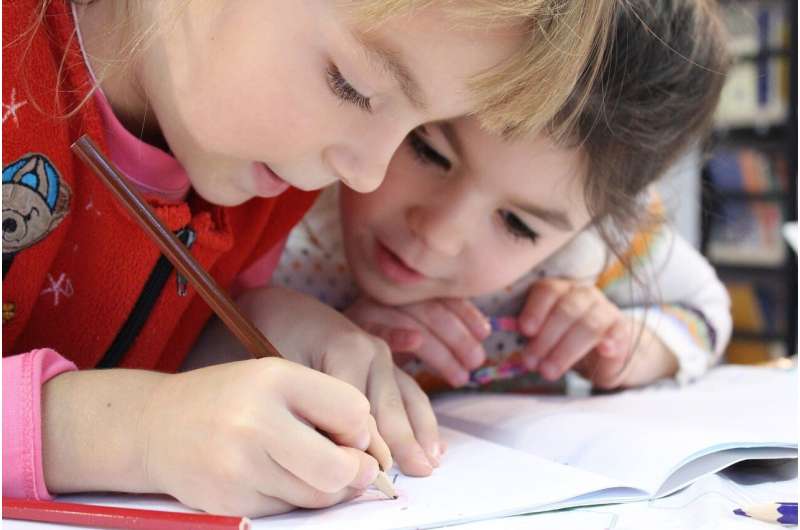Credit: CC0 Public Domain
COVID-19 cases in schools, early childhood education centers and childcare are mainly driven by community transmission. Off-site learning should therefore be a last resort, a new Australian report has found.
The Murdoch Children's Research Institute (MCRI) prepared the COVID-19 in Victorian Schools Report at the request of the Victorian State Government. The report recommends schools and childcare centers should re-open as soon as community transmission of coronavirus falls and stays low.
Professor Fiona Russell, from MCRI and The University of Melbourne, who led the analysis team said, "School and childcare COVID-19 outbreaks were far more likely in those areas that also had high community levels, suggesting community transmission drives COVID-19 spread in schools."
"The single best policy to support school reopening prior to the development of a vaccine or treatment is suppression of COVID-19," she said.
The report analyzed government data which included reported COVID-19 cases and outbreaks across all early childhood and primary and secondary educational settings in Victoria from 25 January to 31 August.
At the start of August 2020, Victoria and the United Kingdom were reporting similar numbers of new daily cases. By mid-November, Victoria had recorded 14 days of no new cases while the UK was experiencing 25,000 new cases every day.
Cases associated with schools accounted for eight per cent of all cases in Victoria. Of 373 students and 139 staff who were infected and linked to a childcare or school event, four students and four staff were admitted to hospital, all of whom subsequently recovered.
The report's senior co-author MCRI Professor Sharon Goldfeld said, "Childcare and schools play a critical role not only in providing education, but also offer critical support, especially for the most vulnerable of students, which makes them a priority for opening and remaining open."
"Closing schools should be a last resort, especially for childcare and primary school children as cases in this age group are less likely to transmit and be associated with an outbreak."
The report also provided detailed scenario plans for possible outbreaks following the staged easing of lockdown restrictions which would follow a traffic light system. These plans have drawn on experiences from international settings, designed to reduce day-to-day disruptions as far as possible, while ensuring that teachers, students and the wider community is kept as safe as possible.
Key findings:
- 373 students had an infection likely acquired at an ECEC or school event
- There were 1,635 infections linked with ECECs and schools, out of a total of 19,109 infections in Victoria. Cases associated with schools accounted for nine per cent of all infections in Victoria.
- Testing, Tracing and Isolation within 48 hours of a notification is the most important strategy to prevent an outbreak. In Victoria, the average time between confirmation of the first case in an ECEC or school and school closure was 1 day. This timely response prevented outbreaks from occurring as 66 percent of events in schools involved just a single infection in a staff member or student and 92 percent involved fewer than 10 cases.
- Of 139 staff & 373 students who likely acquired COVID-19 at an ECEC or school event, 8 (4 staff and 4 students) admitted to hospital and all recovered
- Infections in ECEC and schools were rarely linked to the most vulnerable population, the elderly
- If the first case was aged 12 years or younger, an outbreak (2 or more cases) was very uncommon.
More information: www.mcri.edu.au/sites/default/ … t_final_10112020.pdf
Provided by Murdoch Children's Research Institute
























